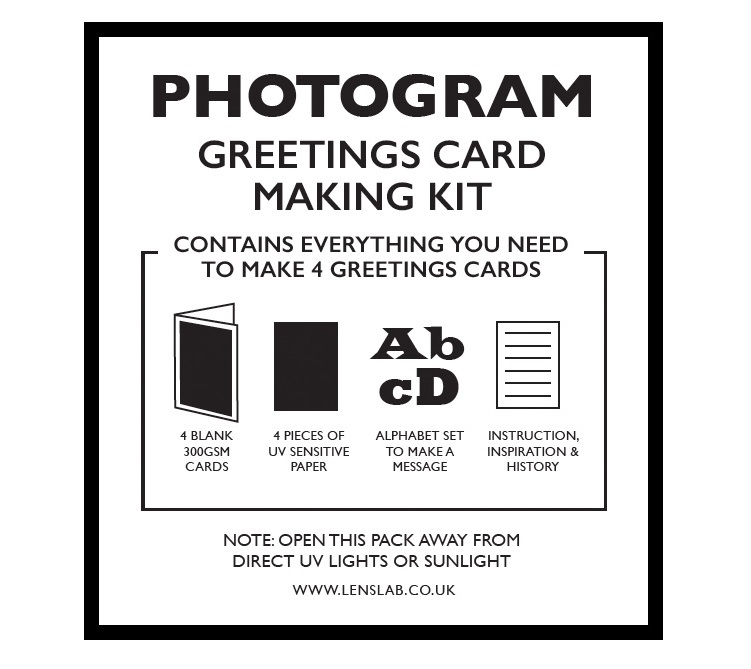Make your own cyanotype photogram
Posted on 2018-04-12 (5491 VIEWS)
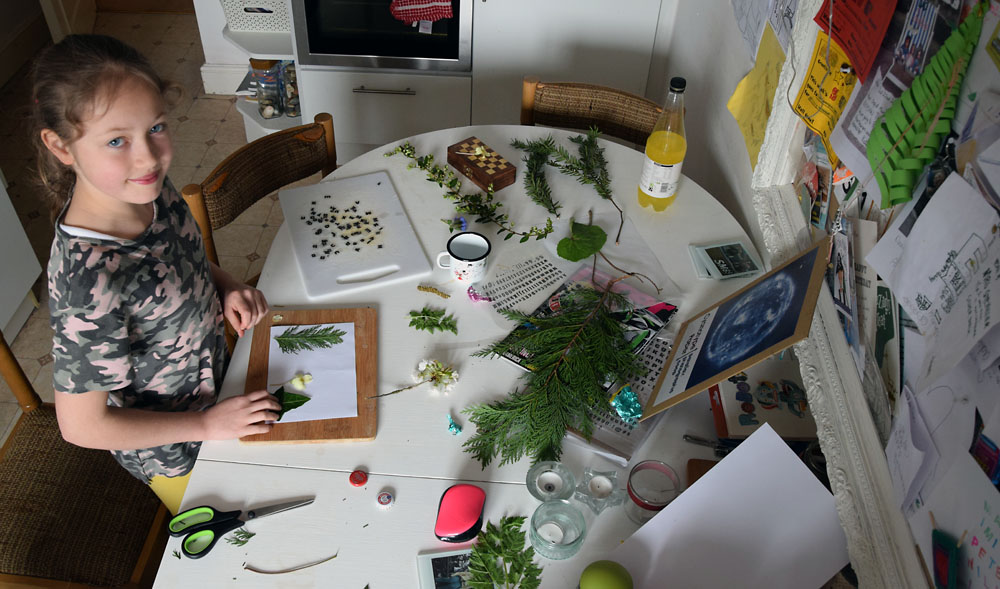
Cyanotype photograms are great projects for children and serious artists.
The cyanotype photogram process is easy, clean(ish), fast and exciting so they make a great photography project for kids as well as serious artists.
Before we begin, here's a few links to some of my favourite cyanotypes to help you get inspired.
- https://www.pinterest.com/pin/374854368964926997/
- https://fraenkelgallery.com/exhibitions/cyanotypes
- https://makezine.com/2016/01/15/radical-cyanotype-process-meghann-riepenhoff/
There's some beautiful images in there, don't you think?
Lets get started with a really short history lesson. The process was invented in 1842 by English Astronomer
Sir John Herschel
as a way of duplicating his notes and diagrams (blueprints). In the same year, his friend
Anna Atkins
applied the process to seaweed by making cyanotype photograms that were contact printed by placing the unmounted dried-algae original directly onto the cyanotype paper. Some of this original work can be seen at the
British Library in London.
The coining of the word "photography" is usually attributed to Sir John Herschel in 1839. It is based on the Greek φῶς (phōs), (genitive: phōtós) meaning "light", and γραφή (graphê), meaning "drawing, writing", together meaning "drawing with light". It's also interesting to note that blueprints were used commercially up to about 20 years ago to make copies of all types of plans.
One last bit of theory... the science lesson! Cyanotype is a very simple process. It involves treating a surface with iron salts that reacts to UV light. In this case, ammonium ferric citrate and potassium ferricyanide. Two separate solutions are made and then equal quantities of each solution is mixed together in a third container. Coat some paper or material in the solution and let it dry in a dark place. It's then ready to use to make your photogram.
Fortunately you do not need to mess about with the chemicals because the pre-made paper is freely available to buy by mail order on the internet. We like Parallax Cyanotype 8 x 10 paper. You can order this here: https://parallaxphotographic.coop/shop/cyanotype-paper/
Or you can buy one of our Greetings Card Photogram Kits with everything you need to make 4 beautiful Photogram Greetings Cards for just £4.99 here: : https://www.lenslab.co.uk/photogram
Let the fun begin! Photograms can be made with just about any object but it's nice to know that many cyanotypes are still made with objects from nature, just as Anna Atkins did nearly 200 years ago. It's also a fun way to think about nature and a great excuse to get your kids out into the fresh air to collect some flowers, leaves and anything else that inspires them.
My children are at the age where they are learning to read and write, so I managed to cram in a bit of english by printing some alphabets onto transparencies so they could cut them up and arrange them into words.
It's really helpful to let them make a composition on a blank piece of paper in full light so they don't feel any pressure that the paper might get spoiled by the ambient sunlight. When everyone is happy you can block out as much light as possible and transfer the objects that are going to make the photogram onto the coated cyanotype paper. It doesn't need to be too dark, just avoid direct sunlight and UV lamps. Take the composition to the window sill where there is plenty of sunlight and watch it slowly fade. On a sunny day, this is likely to be around 4 minutes, on an overcast day, this could be around 15 minutes. It's a good idea to cut a small strip to use as a test so you can lift the object off every few minutes to check the contrast. When there is a good contrast you know it's ready. Take the paper to a tray of water and swish it around for about 30 seconds, completely submerged. Then you can hang it to dry and admire your work.
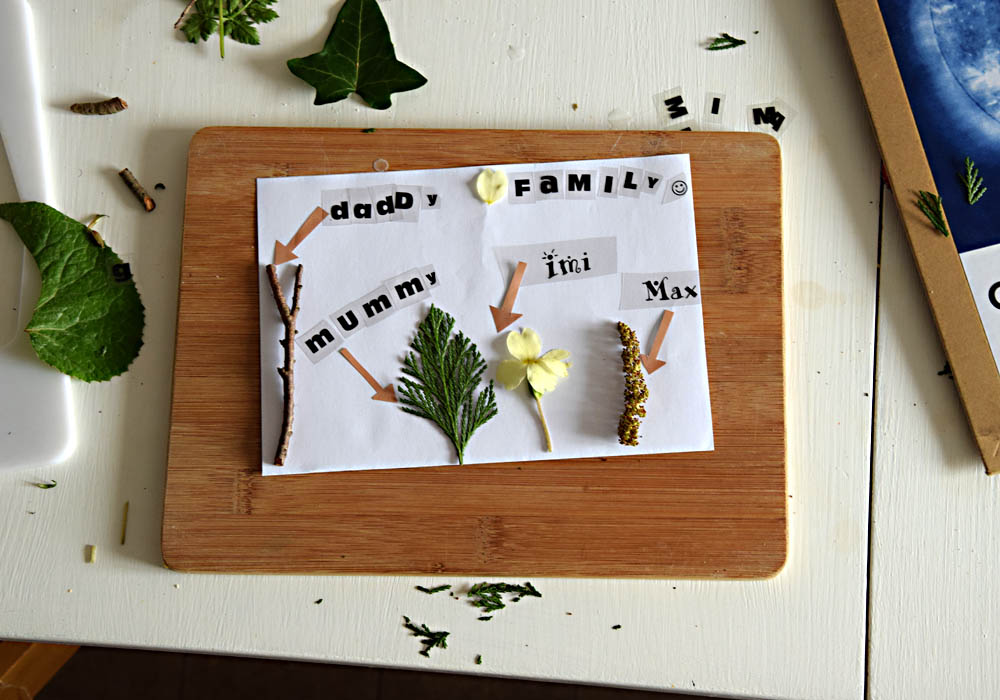
Use a combination of objects and film.
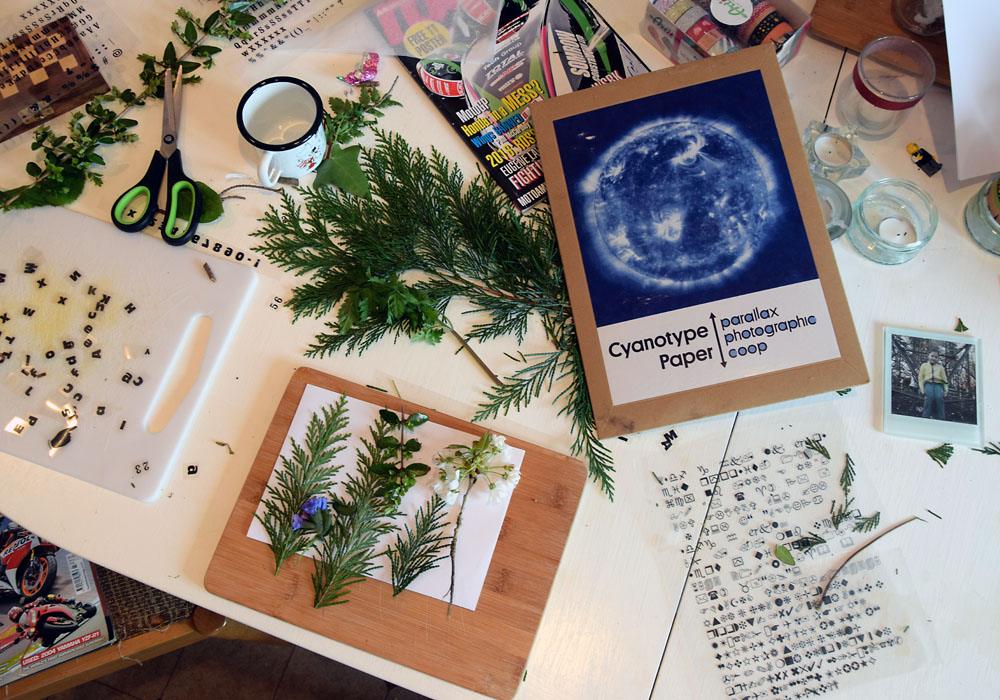
Create the composition on normal paper in natural daylight.
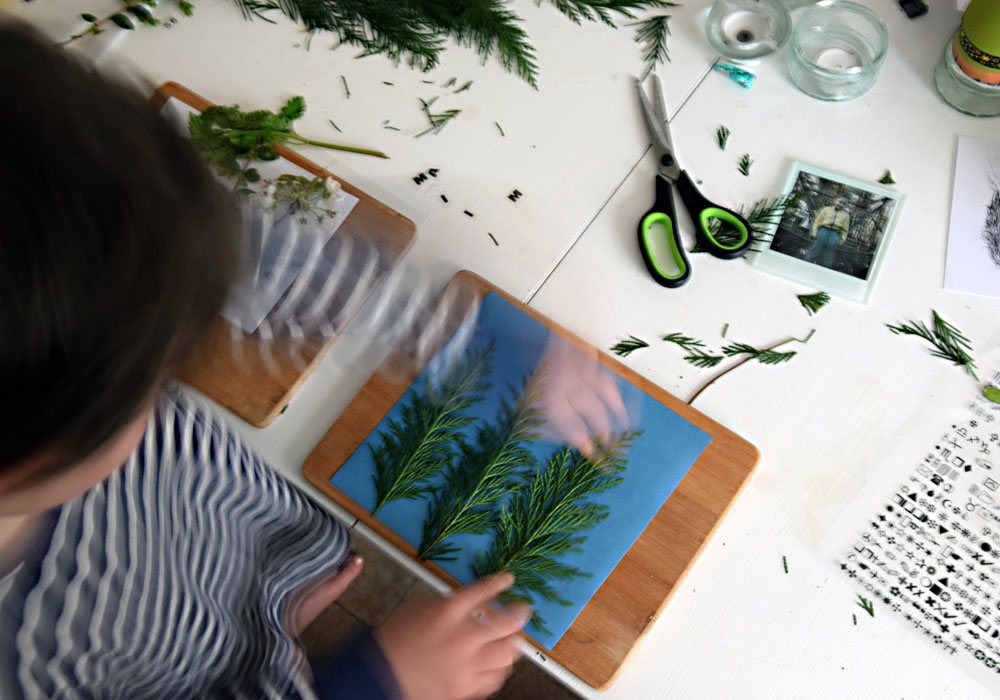
Transfer the composition onto cyanotype paper under subdued light.
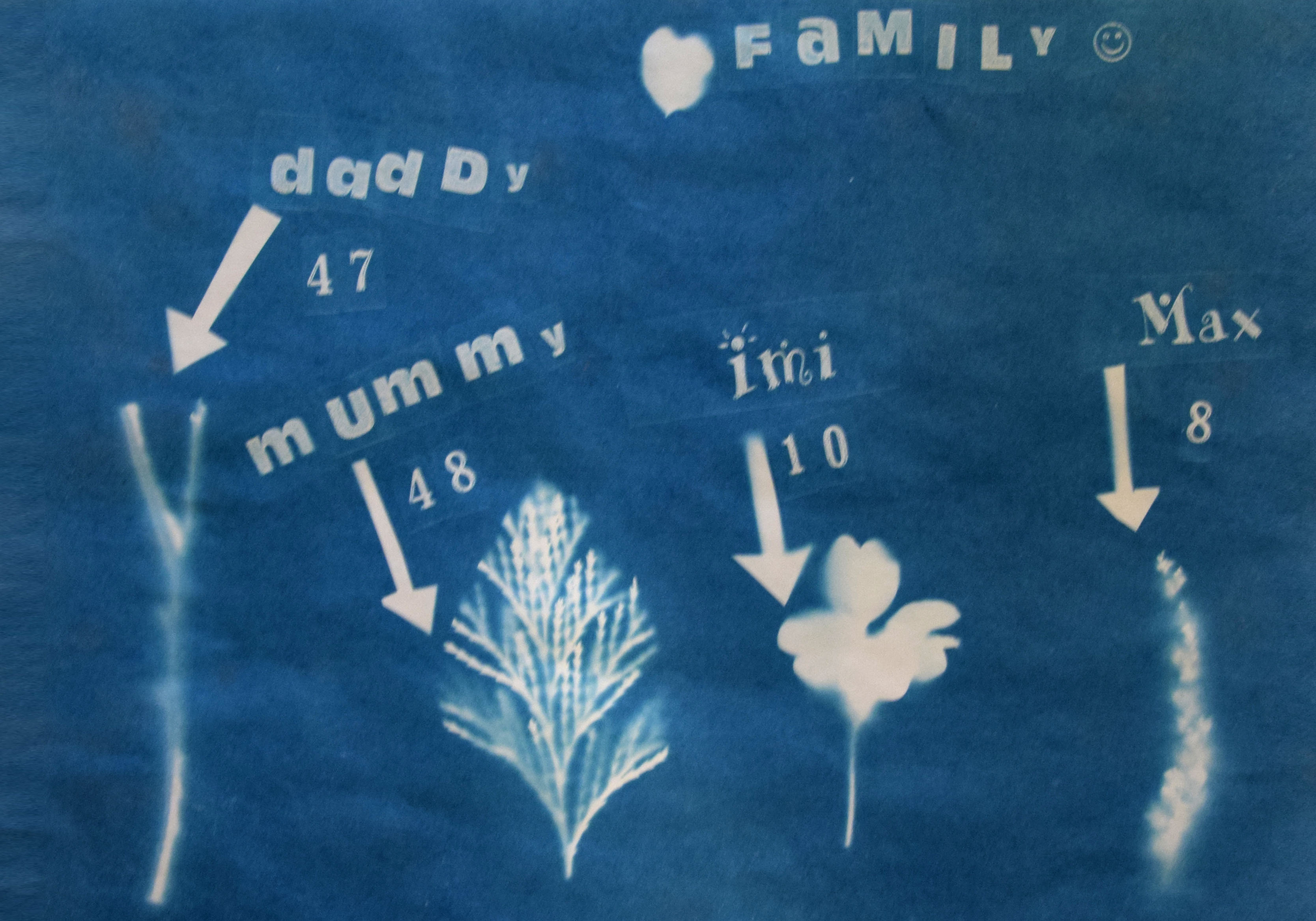
The final results are a fun creative expression to keep.
INDEX TO ARTICLES
Shoot Products Like A Pro >
2020-07-15 By Phil Sills
Finding the right photo book for your pictures >
2019-10-31 By Flavio Longato
Cambridge by camera >
2019-02-08 By Peter Levenspiel
Hooray for the V&A >
2018-10-30 By Peter Levenspiel
Nitecore All Weather Adventure Backpack review >
2018-07-06 By James MacDonald
100 years of camera history >
2018-06-25 By Leonardo Stone
Form & Function by Chloe Rosser >
2018-06-08 By Peter Levenspiel
Check this amazing footage from the Wiral Lite >
2018-05-31 By Leonardo Stone
Interview: Clare Hewitt, Portrait of Britain Winner >
2018-04-23 By Peter Levenspiel
Make your own cyanotype photogram >
2018-04-12 By Peter Levenspiel
Video review: Starter ND filter kit >
2018-03-12 By Peter Levenspiel
Getting started: DIY product photography >
2018-02-04 By Peter Levenspiel
Photographers heaven? >
2018-02-03 By Leonardo Stone
The Zkin Kampe, a bag for life? >
2018-02-02 By Liz Taylor
Into the Woods: Trees in photography at the V&A >
2018-01-30 By Peter Levenspiel
Running, gunning and shooting from the hip! >
2017-10-31 By James Macdonald
Getting the most out of your Interfit reflector >
2017-10-17 By Paul Stillman
Video review: Lens Rims form easyCover >
2017-09-27 By Peter Levenspiel
Destination: Lens Lab visits Lewes >
2017-08-23 By Peter Levenspiel
Peak Design slide strap - This one’s from the hip! >
2017-07-18 By James Macdonald
What to shoot in Madrid >
2017-06-06 By Peter Levenspiel
The basics of manual camera controls explained >
2017-03-30 By Peter Levenspiel
Wobble free Wimberley Head Mark II >
2017-03-22 By Paul Stillman
The joy of wildlife photography >
2017-03-21 By Paul Stillman
Grow your garden photography skills >
2017-02-22 By Peter Levenspiel
Portsmouth: A photo friendly getaway destination >
2017-02-19 By Peter Levenspiel
Slow down time with ND filters >
2017-02-16 By James McDonald
The 600mm Sigma with pulling power >
2017-02-05 By Paul Stillman
The beast that does it all - well almost! >
2017-02-01 By James McDonald
Photographing birds of prey >
2017-01-14 By Peter Levenspiel
What the F? >
2017-01-04 By Peter Levenspiel
The best light in Europe! >
2016-11-01 By Peter Levenspiel
PART 1: Smartphone's V DSLR's >
2016-11-01 By Peter Levenspiel
Review: Nikon Nikkor Micro AF 105mm f2.8 lens >
2016-10-09 By Paul Stillman
2016 Woodland Trust tree of the year shortlist >
2016-09-24 By Liz Taylor
Surprisingly, kids can be pretty good at photography... with a little guidance! >
2016-09-09 By Peter Levenspiel
Want to improve your garden photography? >
2016-09-07 By Paul Stillman
Plane boring... What's your thing? >
2016-08-10 By Peter Levenspiel
Learn from the masters! >
2016-08-08 By Peter Levenspiel
Plan for success... Wedding photography >
2016-07-15 By Peter Levenspiel
What does Brexit mean if you're a photographer? >
2016-06-25 By Peter Levenspiel
Woodland bird photography at its very best! >
2016-06-18 By Paul Stillman
Top 3 equine photography tips from a pro… >
2016-06-17 By Peter Levenspiel
Wide angle lenses: The estate agents magic trick >
2016-06-10 By Peter Levenspiel
Head for the woods... macro season is here! >
2016-06-03 By Peter Levenspiel
The eeirie work of Christian Richter >
2016-05-20 By Peter Levenspiel
Doggy doggy on the wall... >
2016-04-04 By Peter Levenspiel
6 merits of renting photographic gear over buying >
2016-04-01 By Matt Golowczynski
Photographic exhibition at the V&A: Paul Strand >
2016-03-25 By Liz Taylor
Create a family best-seller >
2016-03-23 By Peter Levenspiel
Droning on about it... >
2016-02-09 By Peter Levenspiel
Top 10 Things to consider before stepping into photography >
By Racho Stano


